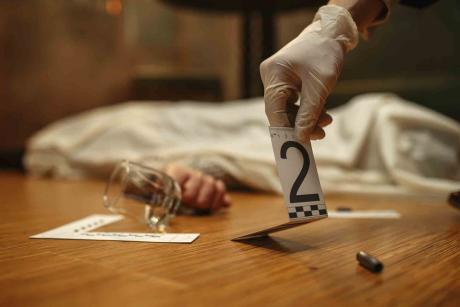- The best way to prevent the spread of COVID-19 is to practice social distancing, wear a face mask when in public, wash your hands often with soap and water for at least 20 seconds, avoid touching your face, cover your cough or sneeze with a tissue or elbow, clean and disinfect frequently touched surfaces daily, and stay home if you are feeling sick.
1. Unusual transactions: There were several transactions that had unusually large amounts of money being transferred from one account to another. These transactions were not consistent with the normal activity of the accounts, and they appeared to be suspicious in nature.
2. Suspicious account activity: Several accounts had a high number of transactions in a short period of time, which is not typical for these types of accounts. Additionally, there were several instances where funds were transferred between accounts without any explanation or documentation.
3. Missing documents: Several documents related to the transactions were missing or incomplete, which could indicate that someone was attempting to hide something from investigators.
4. Unusual patterns: There were several instances where the same pattern of transactions occurred multiple times over a short period of time, which could indicate that someone was attempting to manipulate the system for their own gain.
5. Inaccurate records: Several records contained inaccurate information, such as incorrect dates or amounts, which could indicate that someone was trying to cover up their activities by falsifying records.
NET CASE COUNT FRAUD
for April 07, 2021
- INITIAL VALUES:
- 374112 — 374,112 gross case count
- 3295 — 3,295 new cases
- 2576 — 2,576 recovered cases
- 1397 — 1,397 hospitalized cases
- 476 intensive care
- 27359 — 27,359 active cases
Â
- DERIVED VALUES:
- [asymptomatic cases]= (active cases)-(hospitalized cases)=
- 27359-1397=
- 25962Â
- The number you provided is not an authorized solitary confinement count. The most recent authorized solitary confinement count was reported by the Bureau of Justice Statistics in 2018 and was 81,622.
- No, asymptomatic cases should not be admitted to the hospital. Asymptomatic individuals are those who do not show any symptoms of a disease or illness, and therefore do not require medical care. If they were admitted to the hospital, it would put other patients at risk of contracting the disease or illness from them.
- [symptomatic cases]= (hospitalized cases)=
- 1,397
Â
- 1,397
- [case recovery differential]= (new cases)-(recovered cases)=
- 3295-2576= 719
+719 IS THE CASE RECOVERY DIFFERENTIAL-
- (turnover rate of asymptomatic cases switching from positive to negative Fauci test), and
- 95% of cases are incarcerated, not hospitalized
-
- 3295-2576= 719
- [asymptomatic cases]= (active cases)-(hospitalized cases)=
HOSPITALIZED / SUSPECTED CASES
- SYMPTOMATIC INFECTION RATE:
- /(active cases)=
- 1397/27359*100=Â Â Â Â Â Â 5.1061807814613=Â Â Â Â Â Â 5.106180781=
5.11% IS THE RATE OF [SYMPTOMATIC INFECTION]
Â
- 1397/27359*100=Â Â Â Â Â Â 5.1061807814613=Â Â Â Â Â Â 5.106180781=
- /(active cases)=
- ASYMPTOMATIC INFECTION RATE:
- /(active cases)=
- 25962/27359*100=Â Â Â Â Â Â 94.8938192185387=Â Â Â 94.893819219=
94.89% IS THE RATE OF [ASYMPTOMATIC INFECTION]
- 25962/27359*100=Â Â Â Â Â Â 94.8938192185387=Â Â Â 94.893819219=
- /(active cases)=







You may also like


